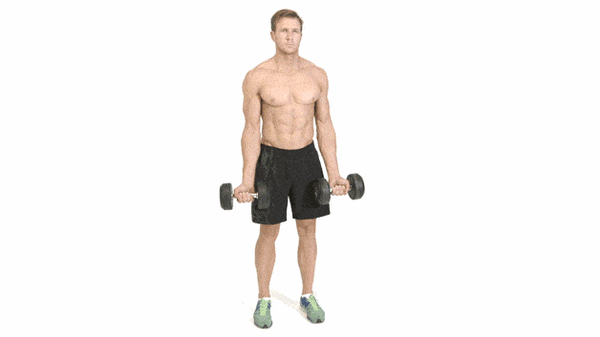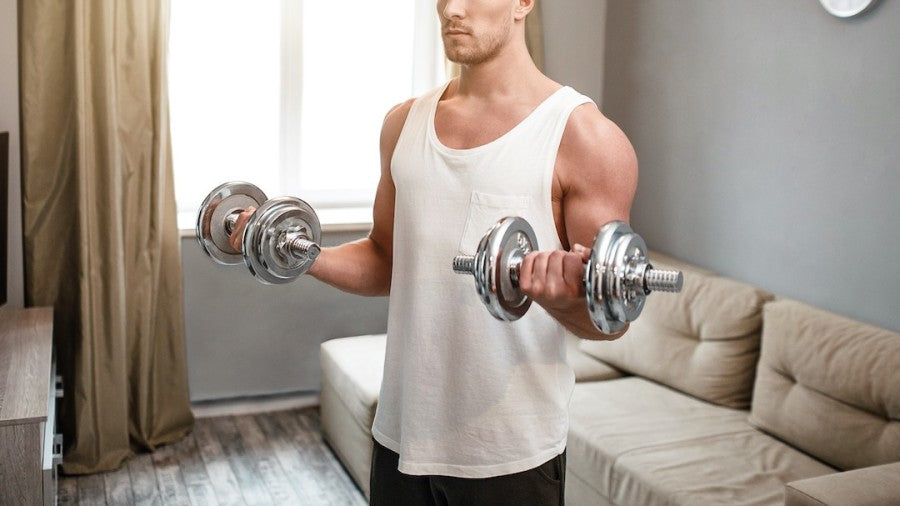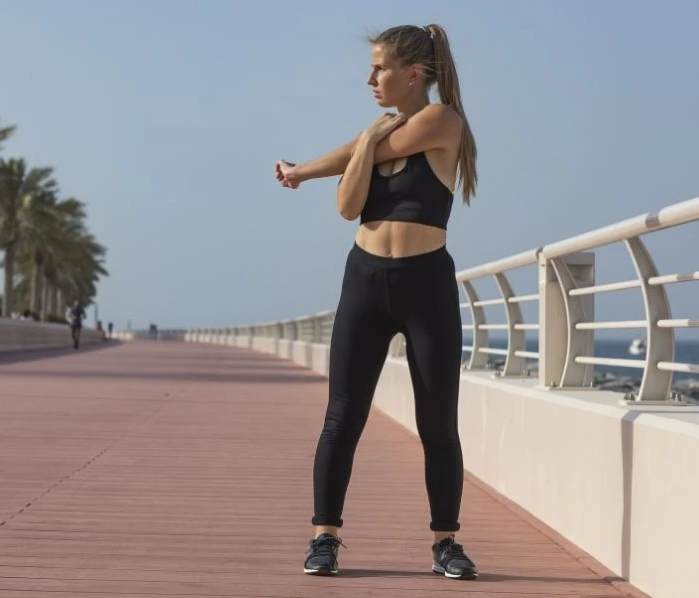
When you think of biceps curls, you might think of a muscular guy in the gym muttering while lifting a huge dumbbell. However, if done well, the biceps curl is one of the simplest weightlifting exercises, and it is valuable to anyone looking to increase or maintain arm strength and muscle tone.The key is to focus on the right technique instead of trying to maximize weight and let your form break down in the process. Make sure to maintain balance by exercising the back of your arms evenly, such as triceps exercises.
- Barbell curl
- Dumbbell curl
- Hammer curl
- Concentration curl
- Zottman curl
- EZ bar curl
- Preacher curl
- Cable Curl
- Reverse curl
What is a Bicep curl?
Biceps curls mainly target the biceps, brachialis, and brachioradialis. When the forearm is supinated (palms up), the biceps are stronger when the elbow is flexed, and when the forearm is pronated, the biceps are weaker. Brachioradialis is most effective when the palm is inward, and the brachialis is not affected by the rotation of the forearm. Therefore, the degree of forearm rotation affects the degree of muscle recruitment between the three muscles.
Why Curls Are a Must for Arm Development?
Before we dive into the specifics, let's look at why you should make curls a staple in your home fitness routine:
Isolate & Overload the Biceps
While rows, pullups, and other back exercises work the biceps as a secondary mover, nothing directly isolates and overloads the biceps brachii like curls. The focused tension triggers maximum growth.
Build Functional Arm Strength
Many daily tasks like carrying groceries, moving boxes, and pulling objects require a strong biceps contraction. You'll notice the difference curling has on your functional arm strength.
Balanced Pushing & Pulling
Most upper body routines emphasize pushing with exercises like presses and pushups. Adding curls gives you a balanced pull to avoid muscle imbalances.
Greater Variety
Barbells, dumbbells, cables, bands, and creative equipment variations mean there's virtually no limit to the curl exercises you can do at home. Constantly changing things up avoids plateaus.
Low Skill, High Reward
The curl motion itself is simple and requires very little technique compared to other exercises. This allows you to go heavy for maximum muscle overload.Whether your goal is bodybuilding-caliber peaks or just slimmer, more toned arms, putting in dedicated biceps work will get you there.
The Role of Biceps

If you want to exercise the biceps more simply and effectively, you can look at the function of the biceps.
The biceps muscle is divided into long head and short head, both of which are connected to the shoulder joint at one end and the elbow joint at the other end.
Its role is:
Bend the elbows and externally rotate the forearm (the palm is facing you) to help the shoulder joint raise the arm.
How to Do a Bicep Curl? (step-by-step)

Choose a dumbbell that you can lift 10 times. The recommended starting weight is 5 pounds or 10 pounds per dumbbell. If you have just started, recovered from an injury, or resumed exercise after sitting for a long time, you can start with 2 pounds.
- Start to stand with your feet hip-width apart. Keep the abdominal muscles involved.
- Hold a dumbbell in each hand. Let your arms relax at your sides, palms facing forward.
- Keep your upper arms stable and shoulders relaxed, bend your elbows and lift heavy objects, bringing the dumbbells close to your shoulders. Your elbows should be close to your ribs. Exhale as you lift up.
- Lower the weight to the starting position.
- Do 8-10 curls, then rest, and do one or two more sets.
Highly Effective Biceps Curl Variations to Try
With easy modification for different weights, angles and grips, you can endlessly switch things up to continually shock your biceps into new growth when training at home. Here are some of the best curl variations to try:
Standing Barbell Curl
The iconic mass-building lift, performed with an underhand shoulder-width grip and strictly curling the bar up toward your chest while keeping the upper arms locked in. Add weight steadily.
Seated Dumbbell Curl
Sitting on a weight bench or chair to curl dumbbells up toward your shoulders one arm at a time isolates each biceps head for focused tension. Go heavy and control the negative.
Hammer Curl
Instead of a supinated (underhand) grip, hammer curls use a neutral (palms facing your body) grip to shift emphasis onto the brachialis muscle that adds thickness to your biceps peak.
Concentration Curl
Sit at the end of a bench holding one dumbbell between your legs. Brace your off-arm elbow against your inner thigh to curl the dumbbell straight up while keeping your upper arm stationary.
Zottoman Curl
Place your feet on a plyo box or bench while seated on the floor to pre-stretch the biceps. Lower the dumbbells down toward your thighs with elbows flared out, then curl back up.
Preacher Curl
An old-school bodybuilding favorite that strictly isolates the biceps through an arm pad or improvised preacher bench setup. Slow down the eccentrics for max tension.
Cable Curl
Face the low pulley with a straight bar attachment in hand, arms extended. Curl the bar up towards your shoulders, with the pulleys adding constant cable resistance.
You'll notice a lot of variety in grip, angle, unilateral/bilateral movements, and intensity techniques. This allows you to zone in on different biceps heads and keep the muscles constantly guessing.
5 Common mistakes
Body swing leveraging force
You think you are cheating to get high scores, but it is in vain. Many people will unconsciously move their backs back when lifting heavy barbells, relying on the inertia of the body, or relying on twisting the body to save effort, just like cheating on a test. You will get a report card of vanity and feel good about yourself, but it will actually be of no use to you!
Incomplete arm extension

It only saves energy for a while, but it may damage the joints. In certain training barbell curls, the arm is not fully straightened due to weight, which may have some effort-saving effects. But this does not have the effect of exercise, and it will also put a burden on the joints.
The core area is too loose

In severe cases, it will cause injuries. When lifting a certain weight of barbells and dumbbells, because the body is not fixed, the muscles in the core area will relax, and the shoulders and wrists will bear excessive weight distribution. In severe cases, it will lead to injuries.
The forearm is not fixed forward
The forward movement of the forearm is the phenomenon of excessively lifting the equipment upwards when doing a curl, which causes the forearm link and the elbow to tilt forward, which is wrong.
Suddenly become faster

The brain can keep up, but the joints can’t keep up. In the later sets of curling exercises.
It may be exhausted because of excessive physical exertion, but I want to complete the target training plan in my heart, so when I do the last few moves, I will suddenly speed up, thinking about completing it quickly. But this will disrupt the muscles and joints that have previously been adapted to maintain a certain frequency of movement, and the sudden acceleration of muscle stimulation may cause the risk and possibility of joint injury.
Safety and precautions
This exercise is usually recommended to most people. However, if you hurt your arm or feel pain during the exercise, please do not continue. After a few weightlifting, you may feel tired and even burn in your biceps and forearm muscles. This is what you need to strengthen and grow your muscles. However, once you are unable to curl your hair in a good form, please do not force additional repetitions. Take a break before doing the next set.
Don't lift heavy weights at first, stop if you feel any pain. Biceps exercises are very popular but don't rush to gain weight until you are ready. The elbow or wrist may be injured, which will affect your entire exercise routine.
FAQs
What muscles do bicep curls work?
The primary muscle targeted with bicep curls is the biceps brachii, which is the two-headed muscle located on the front of your upper arm. Bicep curls also engage the brachialis and brachioradialis as synergistic muscles.
What grip should I use for bicep curls?
The supinated (underhand/palms up) grip is best for maximizing biceps engagement and peak contraction. A hammer grip (neutral/palms facing in) will shift emphasis more onto the brachialis for arm thickness.
How many reps and sets should I do for biceps?
For optimal growth, most lifters do 3-4 working sets of 8-15 reps per biceps exercise. Higher reps with lighter weights promote muscular endurance, while lower reps with heavier loads build maximum strength.
What equipment can I use for curls at home?
Dumbbells, barbells, resistance bands, cable attachments, household objects, and even your bodyweight can be used creatively for a variety of curl exercises at home.
When should I do biceps curls in my workout?
Many lifters train biceps after back exercises near the end of a pull workout. Others put arms on their own dedicated day. Experiment to see what works best for your recovery needs.
How can I make bicep curls more challenging?
Techniques like drop sets, partial reps, forced reps, iso-holds at the peak contraction, and alternating tempos can provide new stimulus. Also explore unique variations like cross-body and Zottman curls.


